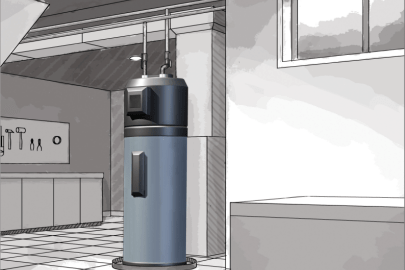Easy Guide to Caring for Your Home's Hot Water System
Easy Guide to Caring for Your Home's Hot Water System
Blog Article
Just how do you feel with regards to What Kind of Maintenance Do Water Heaters Need??

Warm water is vital for daily convenience, whether it's for a rejuvenating shower or washing recipes. To ensure your hot water system runs successfully and lasts longer, regular upkeep is essential. This article supplies useful tips and understandings on how to keep your home's hot water system to avoid disturbances and costly fixings.
Introduction
Maintaining your home's warm water system might appear difficult, yet with a few straightforward steps, you can guarantee it runs smoothly for several years to come. This overview covers everything from recognizing your hot water system to do it yourself maintenance pointers and knowing when to call expert aid.
Significance of Keeping Your Hot Water System
Normal maintenance not just extends the life expectancy of your warm water system however additionally ensures it runs efficiently. Ignoring upkeep can result in lowered efficiency, greater power bills, and also early failure of the system.
Indicators Your Hot Water System Requirements Upkeep
Knowing when your warm water system requires attention can stop significant issues. Watch out for indicators such as inconsistent water temperature level, weird noises from the heating unit, or rusty water.
Purging the Hot Water Heater
Flushing your hot water heater gets rid of sediment accumulation, boosting performance and prolonging its life.
Monitoring and Changing Anode Rods
Anode poles avoid rust inside the container. Inspecting and replacing them when worn is critical.
Complex Issues Needing Specialist Aid
Examples include significant leakages, electric problems, or if your water heater is regularly underperforming.
Regular Specialist Upkeep Benefits
Professional maintenance can include complete examinations, tune-ups, and ensuring compliance with safety requirements.
Checking and Readjusting Temperature Level Setups
Readjusting the temperature settings ensures optimal performance and security.
DIY Tips for Upkeep
You can do a number of upkeep jobs yourself to keep your hot water system in top condition.
Checking for Leaks
Regularly inspect pipes and connections for leaks, as these can lead to water damage and higher costs.
Recognizing Your Warm Water System
Prior to diving right into upkeep jobs, it's practical to comprehend the fundamental elements of your hot water system. Usually, this includes the hot water heater itself, pipelines, anode poles, and temperature level controls.
Regular Monthly Maintenance Tasks
Regular monthly checks can help capture small problems before they intensify.
Testing Pressure Alleviation Valves
Examining the stress relief valve ensures it functions appropriately and protects against too much stress buildup.
Insulating Pipelines
Shielding warm water pipes reduces warmth loss and can conserve energy.
When to Call a Professional
While DIY upkeep is helpful, some issues call for specialist competence.
Conclusion
Normal upkeep of your home's hot water system is essential for performance, durability, and cost financial savings. By complying with these suggestions and knowing when to look for expert help, you can make certain a dependable supply of warm water without unforeseen disruptions.
How to Maintain an Instant Hot Water Heater
Before tinkering with your hot water heater, make sure that it’s not powered on. You also have to turn off the main circuit breaker and shut off the main gas line to prevent accidents. Also turn off the water valves connected to your unit to prevent water from flowing into and out of the appliance. 2. When you’re done, you have to detach the purge valves’ caps. These look like the letter “T†and are situated on either side of the water valves. Doing so will release any pressure that has accumulated inside the valves while at the same time avoid hot water from shooting out and burning your skin. 3. When the purge valves’ caps are removed, you have to connect your hosing lines to the valves. Your unit should have come with three hoses but if it didn’t, you can purchase these things from any hardware or home repair shops. You can also get them from retail stores that sell water heating systems. Read the user’s manual and follow it to complete this task properly. When the hosing lines are connected, open the purge port’s valves. 4. You should never use harsh chemical cleaners or solutions when cleaning your unit. Make use of white vinegar instead. It should be undiluted and you’ll probably use about 2 gallons. 5. Now flush your water heater. This task should probably take about 40 minutes. We can’t give you specific directions for this because the procedure is carried out depending on the type, model and brand of your heater. With that being said, refer to the user’s manual. 6. When you’re done draining the unit, you have to turn off the purge port valves again. Remove the hosing lines that you earlier installed on each of the water valves. Put the valve caps (purge port) back in their respective places and be very careful so as not to damage the rubber discs that are found inside these caps. 7. Now that everything’s back in place, check your user’s manual again to find out how to reactivate your water heating system. 8. Once it is working, turn one of your hot water faucets on just to let air pass through the heater’s water supply pipes. Leave the tap on until water flows smoothly out of it. https://www.orrplumbing.com/blog/2014/september/how-to-maintain-an-instant-hot-water-heater/

Do you like reading up on What Kind of Maintenance Do Water Heaters Need?? Give feedback down below. We will be happy to hear your thoughts about this posting. In hopes that you come back again in the future. Sharing is good. Who knows, you may just be doing someone a favor. Many thanks for your time invested reading it.
Request Service Report this page